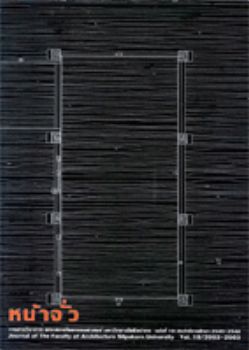In Search of Bangkok's Architectural Heritage
Abstract
The study of our past is ultimately about our present. Thus, our discussion of these architectural traditions is closely tied to our understanding of their modern successors. Of course, the “modern” is a most loaded word, and historians should be aware of its various implications. This paper presents our way of interpreting why and what is modern Architecture in Asia? “Asia” means different things to different people, depending on their own history, geography, and cultural background. “modern Architecture” built during the “modern” period is the focus of study because it is this style that defines our “contemporary” cities and villages. While “modern architecture” is our focus, it’s difficult to define “modern” strictly in terms of calendar years, since the style differs according to geography, by nation or region. In this paper, we intentionally do not capitalize the initial letter “m” to express the complexity and connotation surrounding the word “modern” in Asia. The concept of universal Modernism (with a capital “M”) can not be easily applied to Asia.





